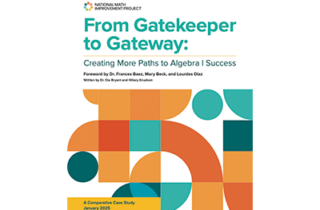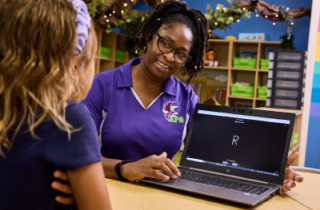Moving to a Multi-Tiered System of Supports (MTSS) requires deliberate implementation in order for it to work. After all, if the teachers in a school don’t monitor the same data or follow the same processes for intervention, then the inconsistency could sink the initiative.
Many students struggle with reading in secondary education. By eighth grade, 70% of students are not proficient readers, so what can schools do about this?
Students are likely to underperform academically when chronically absent from school, which can exasperate teachers. They might wonder what parents are doing about the problem or if they even know what’s going on. They are inclined to call the parent immediately to focus on the attendance concern. However, that outreach can push the parent away.
America is a melting pot where people from all over the world come to seek a better life, which includes many students for whom English is a second language. How do schools support so many newcomer students?
Innovation and accountability–those words don’t seem like they belong together. But in schools, where resources are often limited and outcomes are scrutinized, accountability is essential. During the edLeader Panel “Leveraging Innovation While Staying Accountable: Real Examples of Meeting the Challenge,” John Osborn, Principal of Jacksonville Charter Lighthouse Elementary School (AR), offered his strategies for making sure that innovation leads to measurable success.
“Ninety percent of jobs require digital skills,” said Ji Soo Song, Director of Projects and Initiatives at SETDA. Having access to technology critically affects student academic achievement, career advancement, and pay equity.
Student success in Algebra 1 is a key step towards success in advanced mathematics and future academics, but not all students have opportunities to succeed and grow in math. In the edLeader Panel “Creating Paths to Algebra I Success: From Gatekeeper to Gateway,” experts and education leaders from districts that are part of the National Math Improvement Project discussed ways to ensure that all students have a chance to succeed in Algebra 1 and beyond.
edWeb 2025 Survey Continues to Confirm the Value of Online Professional Learning with Choice and Flexibility for All Educators edWeb has been conducting an annual professional learning survey with our members since 2016. For nearly 10 years, we’ve tracked our members’ professional learning needs and preferences and how edWeb meets those needs. Online, anytime learning… read more →
From weekly parent updates to staff news to crisis communications, district leaders are responsible for delivering effective messages to all constituents. But with a large variety of formats available, they must understand when and how to use each medium and how they fit into their overall district communication plan.
You might have said this about a young student: They can’t read, but you’re unsure why. Was it the instruction or the program? Were the assessment results not specific enough? Regardless of the cause, the student was falling behind, and solutions seemed limited. Yet, there are effective ways to promote reading growth.











